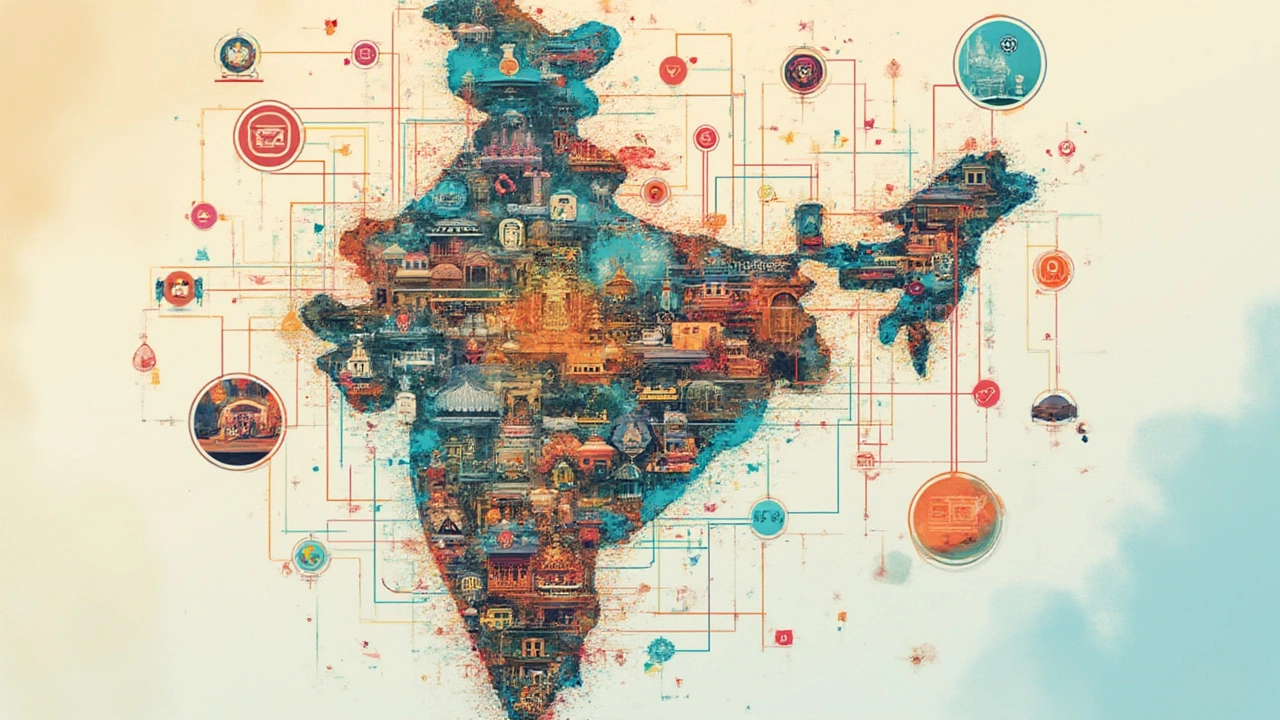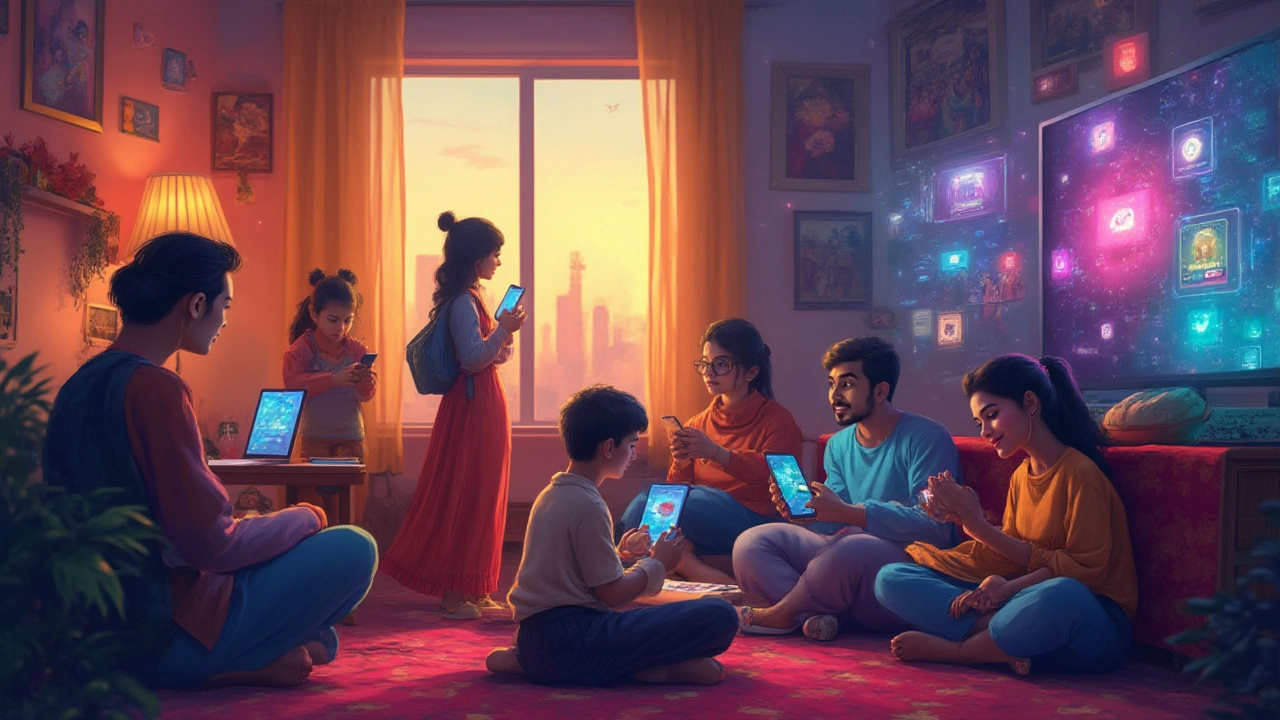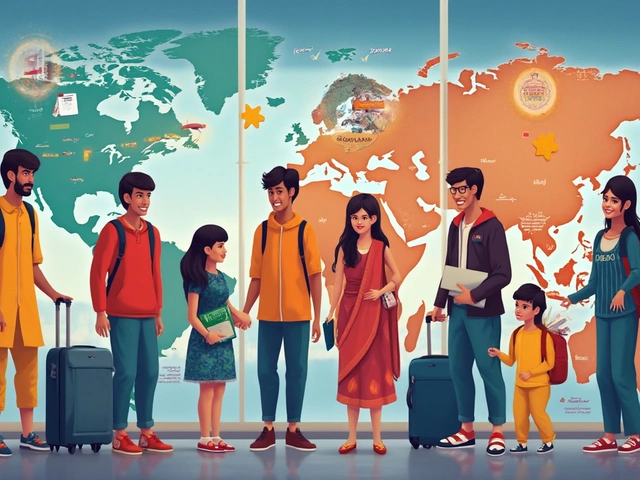Scroll through your phone right now. Count how many apps you use every day. Notice how some keep you scrolling, some keep you shopping, and some play your favorite music or shows. The wild part? Most of your online time probably happens on just a handful of internet platforms. But which type stands out as the world's main stage? Spoiler alert—social media sits right at the top, dwarfing most other platform types by reach and sheer daily attention. Still, it's not the full story. The structure of the web is shaped by more than one kind of digital giant. Let’s lift the hood and examine exactly what these platforms are, why they’re everywhere, and which ones rule the roost in 2025.
The Rise of Internet Platforms: Why Social Media Dominates
Remember when dial-up felt advanced? The world of internet platforms exploded almost overnight. But what exactly is an internet platform? At its core, it’s a digital space or service designed so users can interact, share, create, or buy and sell. Some platforms might sound basic—like forums or news boards—but others, especially social media, have completely changed daily life. If you’ve ever wondered if everyone else spends more time on social networks than you do, you’re not alone. According to Datareportal’s 2025 report, over 5.1 billion people—yes, almost two thirds of the global population—actively use social media, and the average user clocks nearly 2.5 hours each day jumping between apps like Facebook, Instagram, WhatsApp, TikTok, and X (that’s what Twitter is called now).
This isn’t just about posting vacation pics or liking memes. Social media became so much bigger: people bank here, debate politics, organize protests, and discover new careers. Behind it all, algorithms nudge us toward customized news, viral trends, or that odd cat video your friend swears is hilarious. In fact, Facebook alone hit 3.25 billion monthly users by June 2025, and platforms like TikTok soared past 1.5 billion. The reach is wild: you’ll find debates, birthday wishes, live classes, job offers, and even marketplace deals all under the social banner. What really makes social media different from older web forums is the power of user-generated content at scale. Instead of reading articles or watching static videos, everyone becomes the broadcaster; suddenly, it’s your turn to go viral or start a trend that circles the globe.
Here’s something that most folks miss: it’s not just about connecting with friends. Brands, schools, and governments use social platforms to reach wide audiences fast. During global events—like elections, natural disasters, or global sporting finals—updates often hit social feeds before traditional news. Social media platforms are also testing grounds for new tech: think about Instagram’s augmented reality filters or Meta’s vision for virtual reality meeting spaces. And if you’re worried about privacy, you’re not alone. Features like encrypted chats, disappearing messages, and custom friend lists are more common as people push back against intrusive data tracking. So, if you’re setting up your own club, resource group, or even a small business, learning how these platforms work really matters. That’s why social media dominates the definition of the modern internet platform—it’s where attention flows and cultures are shaped.
Tips for readers: if you want to get the most out of social media without it draining your day, set notification limits, use app timers (many platforms now offer them), and explore private or topic-specific groups where conversations can be more meaningful and less distracting. Don’t be afraid to test new features—new tools constantly land, and early adopters are often the first to build big audiences or land fresh opportunities.

Other Giants: Marketplaces, Streaming Services, and Cloud Platforms
Social media may grab the limelight, but there’s more to the internet platform story. Think of online marketplaces. Amazon isn’t just a website—it’s the backbone for millions of sellers and buyers across the world. In 2025, Amazon’s marketplace alone supports over 9 million sellers, and total US online retail sales are expected to hit $1.3 trillion. Platforms like eBay, Alibaba, Shopee, and Etsy all follow the same model: they connect buyers and sellers, offer new and used goods, and handle all the messy backend stuff—payment, shipping, even dispute resolution. Most people say “I’ll Google it,” then end up buying on Amazon. That’s power.
Streaming platforms crush it on the entertainment front. Netflix dropped 150 new originals in just the first half of 2025. Spotify curates playlists for over 600 million monthly active users. YouTube is the real juggernaut: over 2.6 billion monthly users watch tutorials, travel vlogs, lectures, music videos, and daily news. Streaming platforms not only changed what you watch—they shaped how you watch. Binge culture (full seasons in a weekend), algorithm-driven recommendations (endless rabbit holes), and ad-free subscriptions all started here. People now expect instant access to whatever they want—so much that some new movies skip theaters and debut online. Even live-streaming has gone mainstream: Twitch isn’t just for gaming anymore. Live concerts, shopping events, and Q&A sessions bring the “now” feeling to screen-time everywhere.
Here’s a twist: cloud platforms power most of these online experiences, but you rarely see them. Services like Google Cloud, Microsoft Azure, and Amazon Web Services are where the internet “lives” behind the scenes. They manage all the heavy lifting so you never see downtime—unless lightning fries a data center somewhere. The cloud also makes things possible that would have seemed nuts just a decade ago: running graphic design apps or machine learning tools in your browser, accessing terabytes of storage, or working in collaborative documents with friends in three countries at the same time. Learning even the basics about how cloud platforms work helps you troubleshoot problems and look smart at family dinner (well, smarter).
- Online learning platforms: Coursera, Khan Academy, and Udemy pulled in over 300 million users in 2024 alone. They offer free and paid courses, live classes, and certificates—sometimes worth as much as college credits.
- Communication platforms: Zoom, Slack, Discord, and Teams. Ever since the remote work boom of the 2020s, these have become the digital “office” or “classroom” for millions.
- Search engines: Still the gatekeepers. Google processes 8.5 billion searches per day. Bing and DuckDuckGo aren’t out of the race, but Google is the main door for most things.
The takeaway? While social media draws the most eyes, other platforms control different slices of daily life—from what you buy to how you learn, work, shop, or chill.

Why the Most Common Platforms Matter—and How to Choose Yours
Let’s get real: most people don’t consciously ‘choose’ a platform. You end up joining what friends use, what everyone at work uses, or what’s popular in your country. But picking and customizing your platforms actually matters—a lot—if you care about security, growing a side hustle, or just having a healthier relationship with your digital world. Social media platforms (‘the big five’: Facebook, Instagram, WhatsApp, YouTube, TikTok) might feel impossible to avoid, but you still have options for how much you share, how you organize your feed, and what tools you use for business, learning, or pure fun.
New platforms pop up all the time. This year saw the rise of niche social apps—think “BeReal” for spontaneous photos or “Lemon8” for editing, plus identity-based networks that focus on specific hobbies or professional niches. Not all will survive, but many find their place as smaller, trusted circles. For freelance designers or teachers, platforms like LinkedIn, Upwork, and Teachable are the launchpads for finding clients and students. Communities tied to shared interests—think Reddit’s endless discussion threads or Discord servers dedicated to obscure hobbies—let you connect over the weirdest and most wonderful things.
Privacy and security worries aren’t going away. In fact, regulations got tighter in 2024 and 2025, and transparency tools became popular. Before signing up, do a quick privacy check: adjust visibility settings, review data permissions, and keep two-factor authentication switched on. Don’t stick with the default—most platforms let you tailor experience and notification overload. Also, try out smaller or emerging platforms. You might find a space with less drama, fewer ads, and more focus on what actually matters to you.
The biggest tip? Treat digital platforms like digital “homes” not highways you speed down without looking. Whether you’re here to share memes, grab deals, binge a series, or even launch a business, a little intention goes a long way. The internet is mostly about people connecting, learning, playing, and creating—but the right platform can be your megaphone, your classroom, or even your main source of income. Just like in real life, you get to choose which door to open next.






Write a comment: